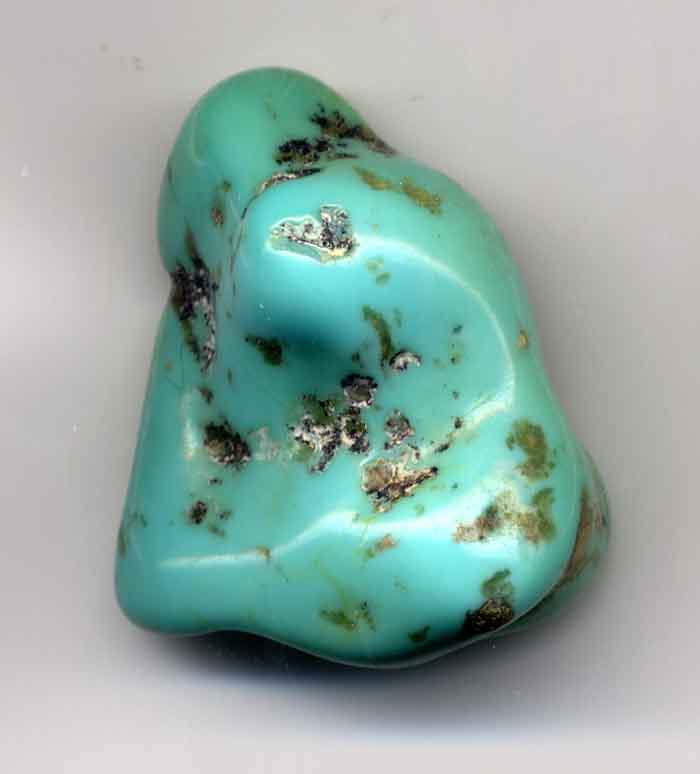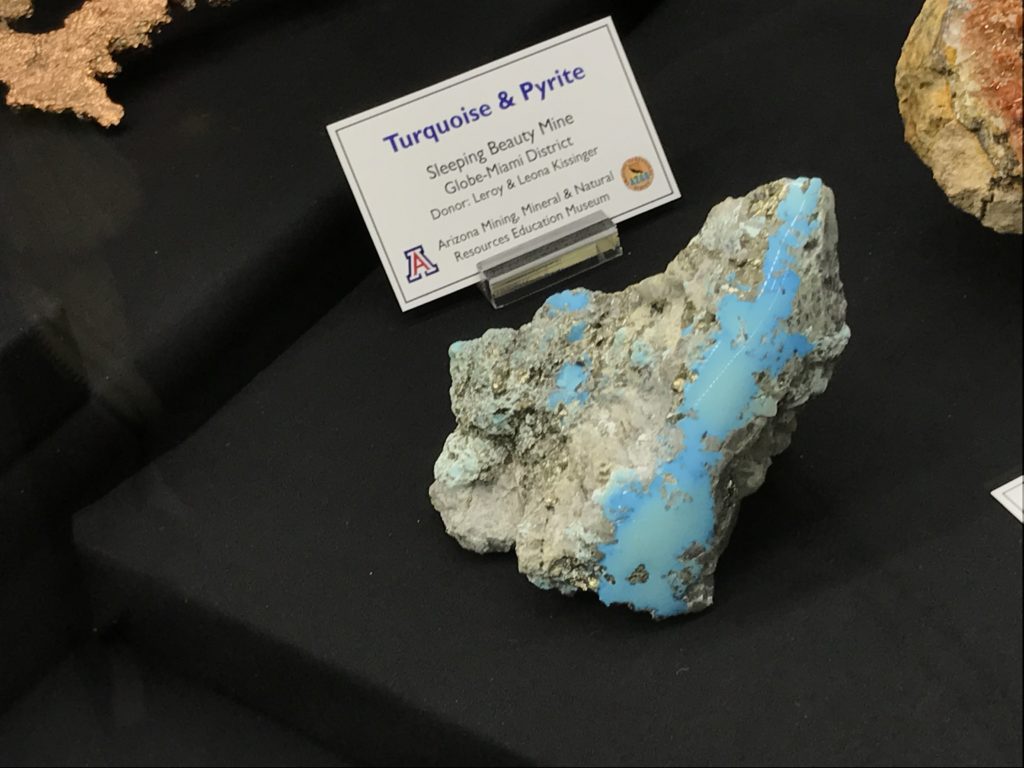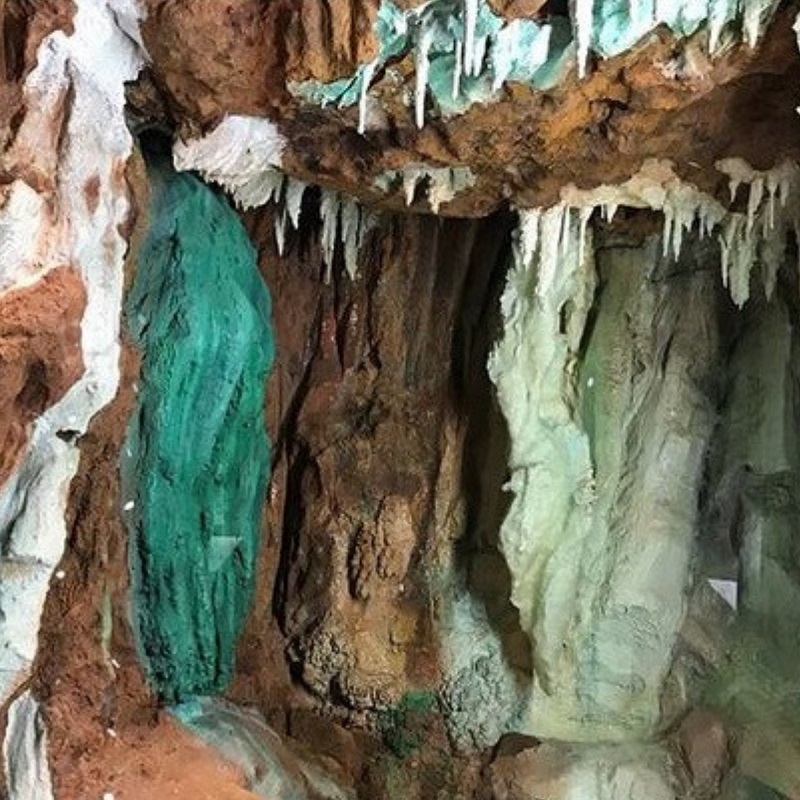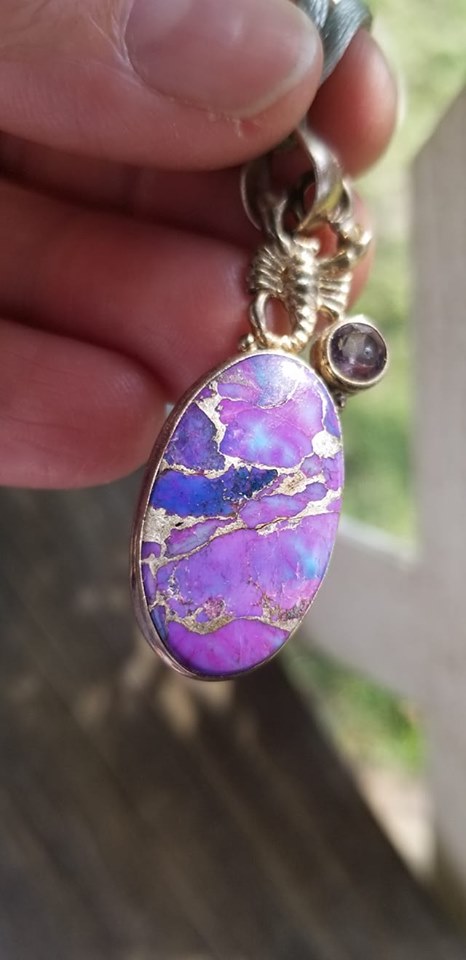Let’s talk about one of the most popular gemstone minerals in history; Turquoise.
We’ll discuss the many colors and varieties while also taking a look a this stone’s healing properties, correspondences, and meanings.
Also, read on to be sure you’re not being duped by turquoise fakes!
This stone is quite popular in jewelry (whereas selenite – with a Mohs hardness of 2, is not as popular because it gets scratched up much more easily), particularly in Native American jewelry and southwestern designs. Some of my fav jewelry pieces are Turquoise!

Metaphysical Properties and History
Treasured for thousands of years, used in ancient Africa, Asia, South, and North America for many different purposes, this mineral is perhaps most often used as some form of protection.
Historically, Turquoise was found to be worn by nobility in Ancient Egypt. There are so many museum pieces displaying the use of Turquoise along with Lapis Lazuli, Carnelian, and a few others. Plus, Turquoise adorns the burial mask of Tutankhamun (aka King Tut) — one of the most well-known and recognized artifacts of ancient times!
- Additionally, there are evidence and artifacts of Turquoise and copper mining activity in Sinai.
- Here’s a great article to learn more about Turquoise’s significance to certain Native American cultures.
Considered sacred to the Navajo, this stone is known to be the bringer of rain.
Since ancient times, it’s also been used as a traveler’s companion, given to those embarking on a long journey over the ages. It’s said that when many explorers and traders were crossing the seas by boat, turquoise was to help provide a safe voyage.
In fact, I always travel with Turquoise as part of my travel mojo kit.

My travel mojo bag includes a rough turquoise & hematite
This mineral invites in strength and vitality along with good communication skills (great for public speaking!) I personally like to pair it up with Clear Quartz for this purpose — amplifying its effect.

Chakras
We most often associate this stone with the Throat Chakra.
Remember, it’s all about communication, Babe.
It assists us to clearly articulate while being sure to speak our truth (and remembering to listen well too). Again, this includes all types of communication; public speaking as well as writing.
Geology
Turquoise is an opaque (not transparent) phosphate mineral with a Mohs hardness between 5-6, depending on the type of Turquoise. You may not think of it as a technical crystal because its crystals are not actually visible and it doesn’t allow light to pass through. However, it is indeed a crystal.
How?
It’s due to its crystalline structure (not visible to the naked eye), but it’s there at the micro-crystalline level.
Turq is now primarily found in the US Southwest as well as Iran, Tibet, China, Australia, and Afghanistan, typically dry arid climates.
Being a copper-derived mineral, its color can be a whole range of blues and greens… (think of an oxidized penny or the Statue of Liberty).
Since it also contains aluminum, I don’t recommend that you put it in a crystal bath or use it to make an ingestible gem elixir.
Why Green or Blue?
- bluer Turquoise comes from more copper being present (Arizona Turquoise is known for this characteristic). [The most sought-after color has the least amount of green in it; more of a lighter or robin’s-egg blue. And it’s the color that’s most often faked, so beware! More on that below.]
- greener Turquoise happens when you have some iron mixed in there (Nevada Turquoise is known for this).
Turquoise can often be found alongside Calcite, Azurite and Malachite, Chrysocolla, and Gem Silica minerals. Being these minerals are all copper-derived, they tend to grow together in the same deposit. That’s a miner’s big clue – when they would find such specimens it was an indication that there was copper in the area and time to start digging!

I visited an awe-inspiring copper mine in Bisbee Arizona not too long ago (where Bisbee Turq hails from). The Queen Mine opened in 1915 and officially closed operations in 1975, but it’s still open for tours. Fun Stuff!

Bisbee Turquoise specimens
Often Faked
Due to mines being depleted, authentic Turquoise has become rarer and consequently, more expensive.
So, unfortunately, the fakes abound!
There’s actually a thriving market for faked Turquoise (often in the form of dyed Howlite).
You may be wondering about the other Turquoise colors out there. Perhaps you’ve heard of purple or White Buffalo turq?
- White Buffalo turq – there’s a hot debate over whether this material is real-deal Turquoise at all. You can read about that here. Personally, since the jury’s still out with the geologists, I’m staying neutral on this one.
- Yellow “Turquoise” – you may have heard of or seen this one. Not so much fake as a misrepresentation. It’s really actually serpentine or some form of jasper. Don’t be fooled!
I’ll get to the purple stuff in this next section. 😉
STRAIGHT UP FAKE ALERT
Purple “Turquoise” – (aka Mojave Purple Turq, Magenta Turq) this one looks too good to be true — and it is. Often times it’s a result of reconstituted mineral, stabilized then mixed with a red-colored synthetic resin (oftentimes plastic) then pressed. Blue + red = purple.
More on what “reconstituted” means below.

Purple Turquoise. Photo Credit to our Crystal Family Member, Courtney Goodwin. TY, Courtney!
FYI: Sometimes people refer to Sugilite as purple turq (which they really shouldn’t do because it just adds to the whole naming confusion… we have enough to contend with already without adding to the confusion, right?)
Found these examples of plastic resin fakes + who-knows-what below in a local shop labeled as “Unbelievable Turquoise hand mined in Madagascar”!!

When asked if they were mislabeled, they told me “No”.
Listen, if you like fakes; fine. It’s the deception (or ignorance) I’m against.
I feel that ignorance can’t be your excuse for long — if you’re gonna sell the stuff then you have a responsibility as a seller to educate yourself on what you’re selling. And if you’re not sure about something then please just be honest about that and then make it your business to go find the answer.
I have a blog post here that I wrote all about spotting Turquoise fakes and frauds (plus some other minerals).
Reconstituted Turquoise?
Essentially, this means that small amounts of authentic Turquoise that would otherwise be wasted are recycled by grinding it up into a fine powder. Resins (usually plastics), synthetic fillers, and adhesives are then often added and then pressed into a mold, carved or shaped.
I totally get the need for this (so we don’t waste that valuable turq-powder), but just keep in mind that this means that there are mostly synthetic chemicals mixed in with your Turquoise. If you’re down with that, then go for it.
Shopping Tips
- If it’s cheap, sorry to say, it’s likely not the real deal since the price of Turquoise has been on the rise for several years now due to its growing scarcity.
- One key thing to always ask about when purchasing turq is:
“where was it mined from?”
It’s a good selling practice to attach the name of the specific mine to authentic turq. The reason for this is that each mine produces a distinct-looking sort of turq. Knowing precisely what mine the piece came from raises the value of the specimen.
If the Turquoise you’re eyeing has no mine name attached to it — and the seller has no idea what mine it came from, that could be an indication that it may not be the real deal. Here’s a great blog that shows many examples of different types of Turquoise.
3. This tip was given to me by a loveable silver and Turquoise miner named, Mongo from The Good Enough Mine in Tombstone, Arizona. If can’t tell whether your specimen is Chrysocolla or turq, LICK IT! Mongo says Turquoise is harder and not as “boney-chalky-sticky” to the tongue. I tried it and he’s right!
Be savvy
Want more tips on Turquoise and how to be savvy about spotting other fakes? Then check out my Crystal Savvy Class Elective.
Thanks for joining me for this spotlight on Turquoise! Let me know; what does this stone mean to you?
Crystal Blessings,



Thanks so much for this informative video! I have a couple pieces of turquoise and am so glad to find out they are real.
Great news, Pam!
Thank you so much. Love your articles.
My total pleasure, Lynette! ♥
Could you link reliable websites to buy Real TURQUOISE & other crystals.
Jay, once you’re armed with the knowledge of how to test for fakes yourself, it’s best to buy them in person and ask the questions. Gem shows are great for this as well as a local trusted seller. I don’t have a fav online turquoise seller.
Thank you for a great video and lots of info. Glad to see you’re back doing what you do. I just have one comment and that is if you would please talk about the properties of moonstone. It is 1 of my favorite stone said I seem to be drawn to do and would like more info on it. Thank you and crystal blessings 🙂
Hey Ramona. Good to see you here. I’ve got a blog post in draft mode about moonstone coming down the pike but in the meantime, here’s a bit of info https://hibiscusmoon.com/top-4-crystals-to-work-with-moon-energy/ 🙂
I meant to say that it is one of my favorite stones I seem to be drawn to it and I would like more information on it.
♥
Loving your knowledge of turquoise. Thanks for sharing, this is one of my favs.
Great to hear that, Judy! Thank you. 😀
Thanks for sharing the information. I was looking for this type of article. It worth reading. Thanks for sharing the same.
Welcome, George. And thanks so much!
I am grateful for the links you provided (picture really help me out).
I am amazed at how many different types of turquoise there are. Your video and blog are very helpful to me and I truly appreciate all your hard work, ???? thank you.
I purchased a short strand of sleeping beauty beads from a very reputable dealer some years ago and they cost me $$$. I have saved them for just the right piece. It looks like I did the right thing instead of just using them randomly.
Ty very much for the information I love turquoise and if I’m going to spend my money on it then I want the real deal just like when I go to zales or belden jewelers when I look at turquoise it gives me peace and I feel calm and relaxed and mezmarized. I love crystals it must have something to do with the sign im born under march 4th 1966.
Great info. I was recently in China and purchased two palm-sized nuggets of what appeared to be turquoise, one is blue and the other more green. I purchased from Two different Tibetan street vendors. Each is attached to a wristband. How can I know if they are fake turquoise and maybe howlite stained to look like turquoise? I can see white where the wristband is attached. Even if they are howlite, are they still healing? Much gratitude. FYI…I paid $8 and $10 for the pieces.
What an amazing and beautiful Turquoise Silver jewelry and very informative article help me a lot in enhancing my knowledge…Thank you
Hi there! I’m attending my first gem show next month in Tucson. I would love to have the 105 page booklet!! I am subscribed to the newsletter but didn’t receive it (not in the spam folder either). Could you please re send this to me? Thank you!!
I’ve always wanted a piece of Turquoise and have looked for year, for some reason, I’ve just never committed to buy!
With respect !!!